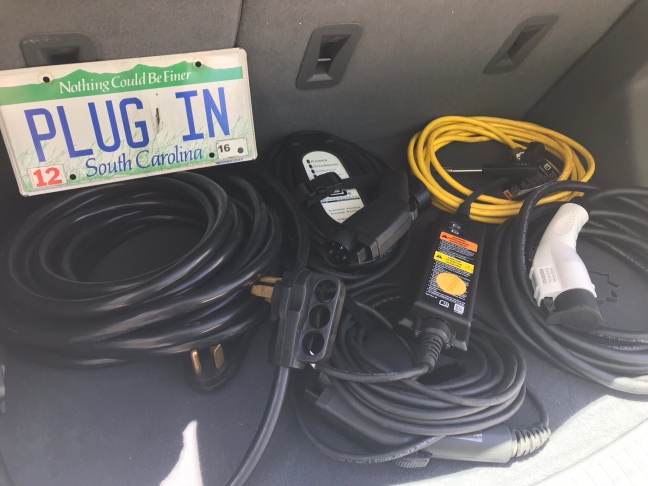Yes, it’s true we drove a Tesla. And yes, Tesla has distinct advantages like an extended range and free charging at Tesla Superchargers. But that doesn’t mean charging on the road for other electric vehicles isn’t possible.
Before we tell you a little about charging on the road though, it’s important to remember that if you own an electric vehicle it is likely the vast majority of charging will take place at your home. It’s a new mindset that you have to wrap your head around. Most often you’ll pull into your garage at the end of the day, plug in and go on with your usual activities at home.
So let’s take a closer look at home charging first.
HOME CHARGING
When you purchase an electric vehicle, over 80% of your charging is done at home. For those that might not know, electricity is cheaper during what’s knows an “off-peak” hours: 11 p.m. and 7 a.m. on weekdays, and 11 a.m. to 2 p.m. on weekends. For most people, these are the same overnight hours that your vehicle is charging in your garage. Many electric utility providers have programs for electric vehicle owners that offer lower electricity rates for electric vehicle charging during these times. Stearns Electric Association’s ChargeWise Program is our Cooperative’s program.
All electric vehicles come with a standard, 120 volt charging cable, similar to that of a television or toaster cord that fits into a wall outlet. Although this works to charge, you should call and electrician and make sure the outlet you are going to use is up-to-date and can handle the electrical load of your EV. One hour of charge in this Level 1 charging situation gets you only 2 to 5 miles of range.
That is why many electric vehicle owners opt to install a home charging unit, which is 240 volts, equivalent to your oven or your clothes dryer. This outlet speeds up the charging process, adding anywhere from 10 to 60 more miles per hour of charging, depending on the vehicle. If you are interested in this option, a qualified electrician should be called to install the new unit, which costs between $500 to $2,000 depending on the charging model you choose or on your need of any electrical upgrades. Stearns Electric even offers a $500 rebate for charging equipment if you enroll on their ChargeWise program. If you are interested in a home charging station, contact your electric service provider and they may be able to direct you to an electrician who offers this service. Visit the Department of Energy’s website for more information on home charging.
But if you do need a quick charge while running between activities in town or if you take a longer road trip like us, you’ll utilize public charging.
PUBLIC CHARGING
So we drove a Tesla, and Tesla has a proprietary charging network and charging equipment, which simply means that no other electric vehicles can charge using their stations. In addition for most Tesla models, charging is free at their network charging stations. This is unique to Tesla.
For other electric vehicles it’s a little bit more complicated, but there are plenty of options.
There are three primary approaches to public charging: (1) pay-as-you-go, (2) monthly subscriptions and (3) free.
Obviously, if given the opportunity, it makes sense to grab a free charge, even if for a relatively short period of time. These types of stations are typically courtesy of workplace benefits or businesses that might gain patronage while you charge. Pay models vary greatly.
Pay-as-you-go options will be most similar to standard gas stations in the sense that you pay a specific rate for the length of the charge or the amount of energy consumed. You will most likely need to swipe a credit card at the charging station.
Finally, and most popular, are charging station networks such as ChargePoint, Blink, Zef and many, many more. These are third party entities that charge a monthly subscription fee to use charging stations in their network (compare the idea to your health insurance and the benefit of using an in-network doctor). Typically you receive a membership card that you swipe or enter at charging stations – it’s a free charge at the time of purchase, but remember you’re paying that subscription fee.
If you purchase an EV, you’ll have to decide for yourself if it’s best to collect a wallet-full of membership cards or if proper planning will allow you to avoid public charging unless you’re running very low on charge.
Do all electric cars have the same charging connection?
All EVs except Tesla use the same J1772 connector for Level 2 charging. Tesla makes adapters that allow their vehicles to charge with this type of connector as well. When it comes to fast charging there are three different DC fast charging connector standards in the United States, all used by different manufacturers. EV drivers can prepare for any charging situation by purchasing multiple adapters so that they can charge in just about any circumstance.

